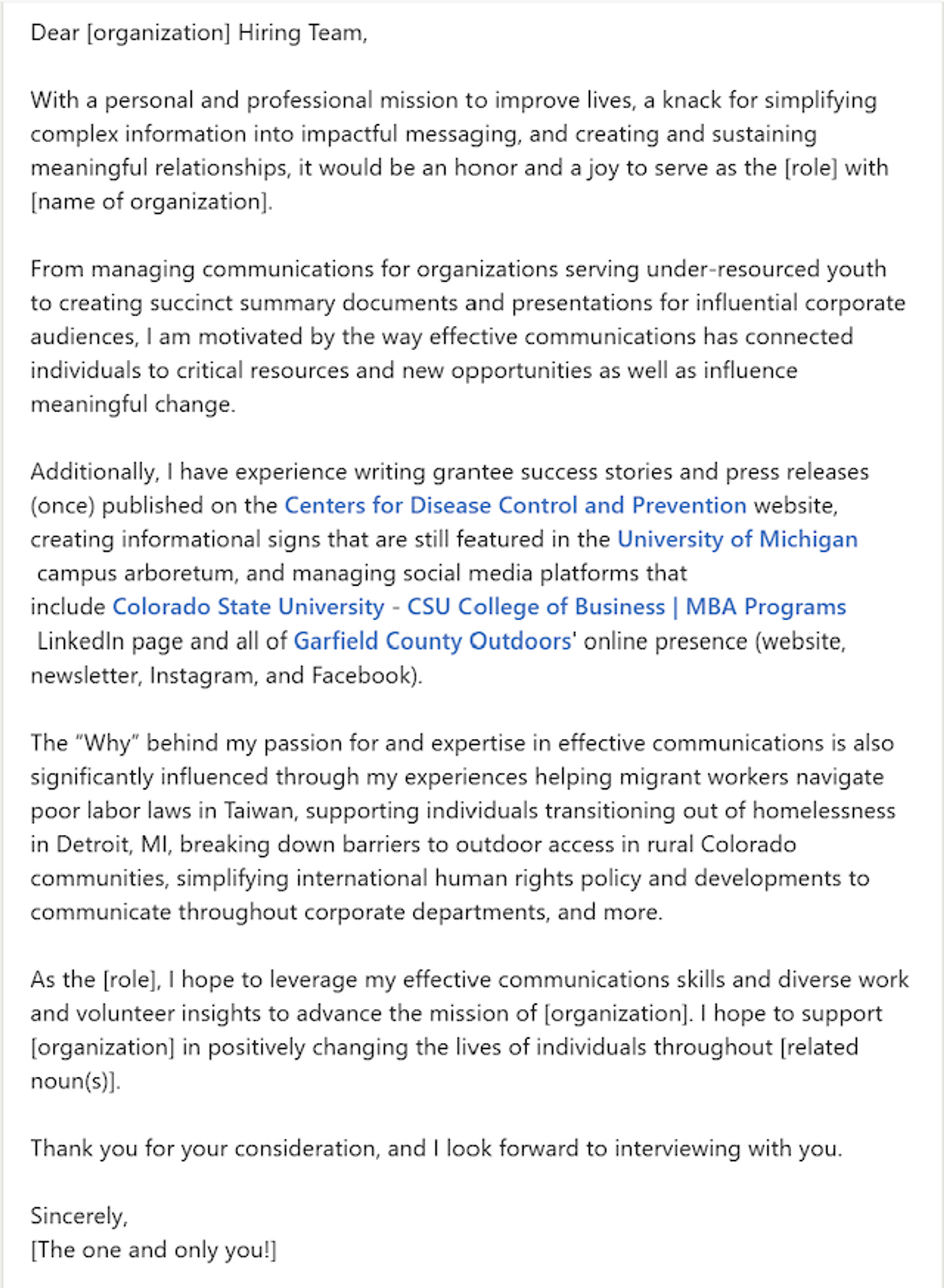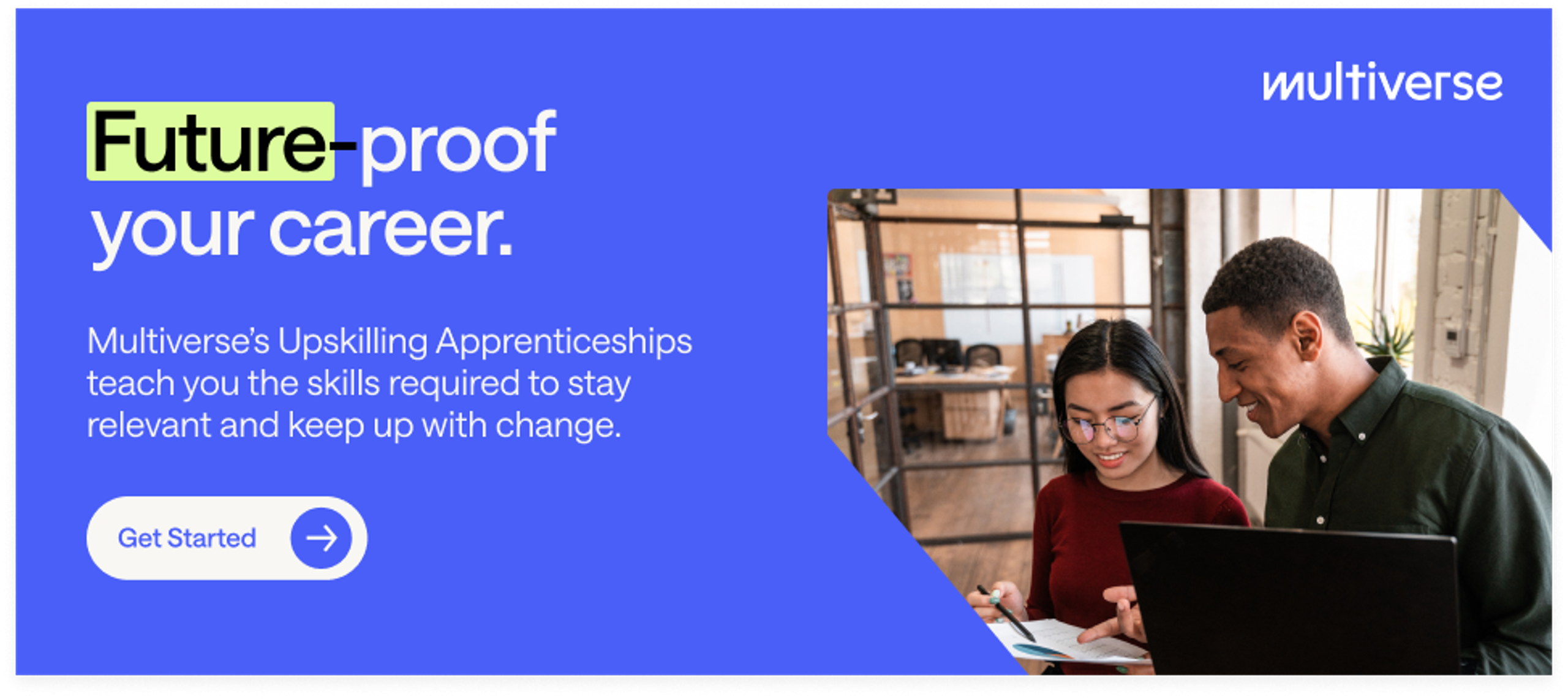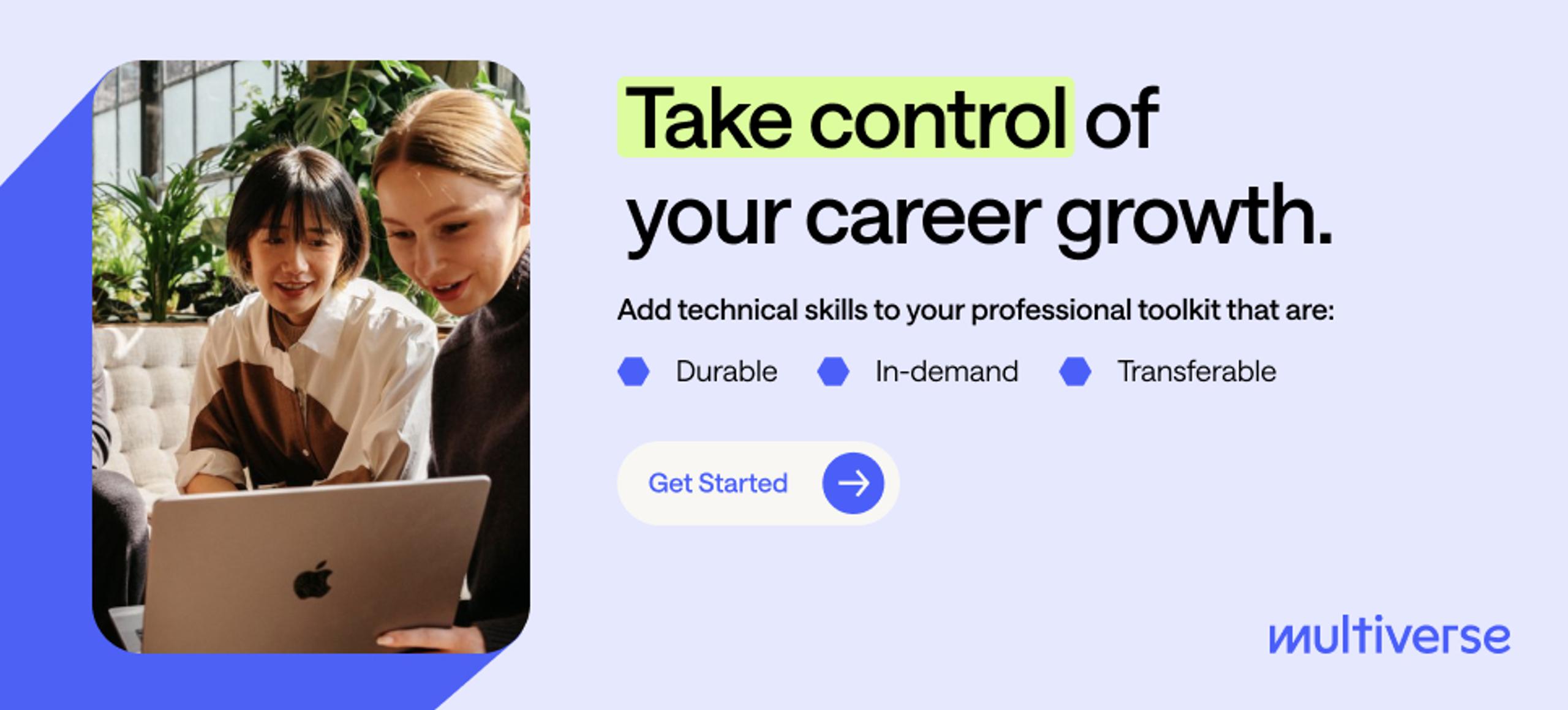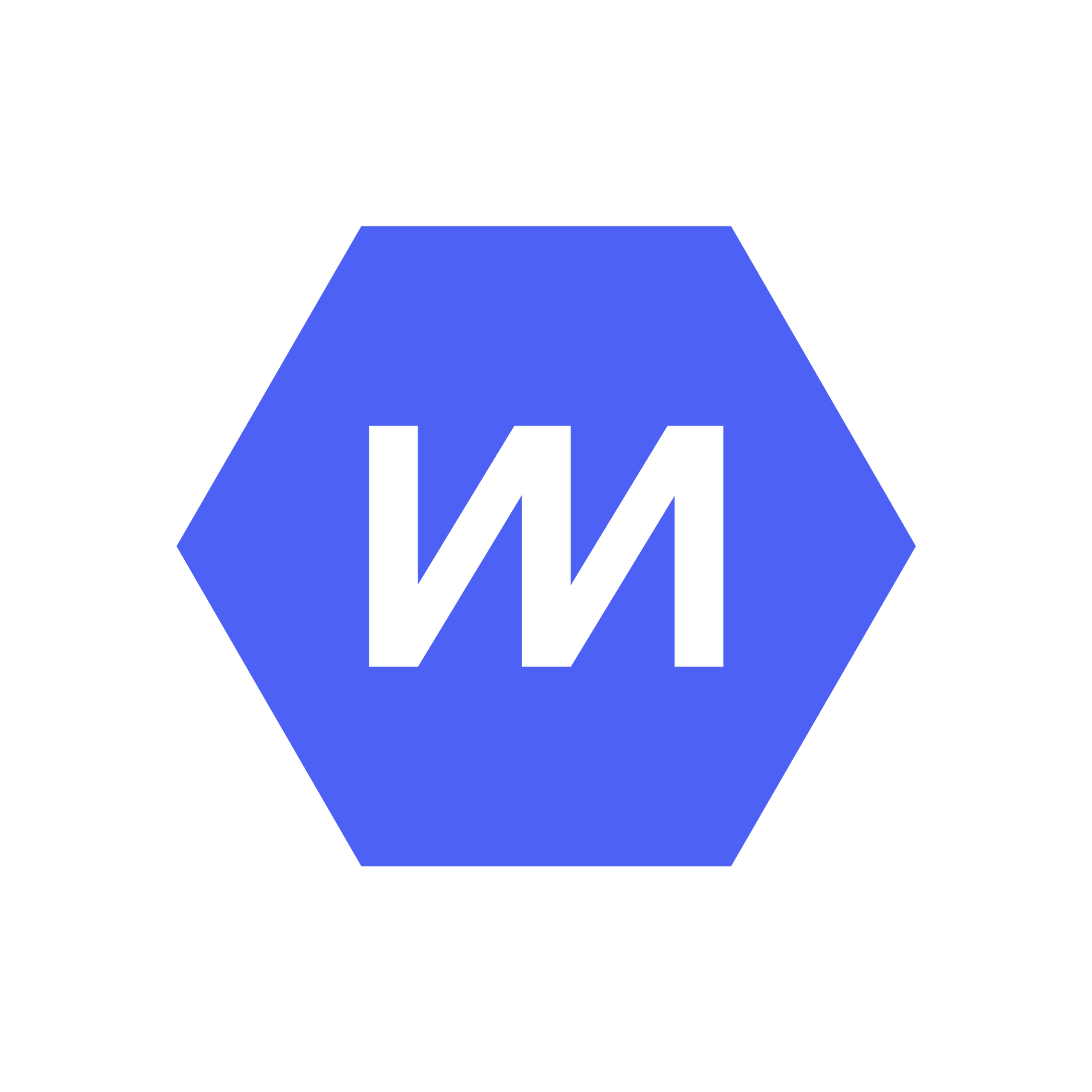Contents
What’s the ideal cover letter length?
An effective cover letter is no more than one page — two at the absolute most.
The next logical question is, “How many paragraphs in a cover letter?” Here’s a quick breakdown:
- Paragraph count: 3 to 6
- Ideal cover letter word count: 250 to 400
Why does the length of your cover letter matter? Consider that 84% of hiring managers(opens new window) spend less than two minutes reading a cover letter — and 36% skim it for no more than 30 seconds. A brief letter helps you get the key points across quickly before they move on to the next application.
Why a concise cover letter works
A brief cover letter helps you clearly show your value from the very first paragraph. When hiring managers can quickly grasp your qualifications, it increases the chances that they’ll move you to the next stage. According to Jobscan research(opens new window), people who include a cover letter are 1.9 times more likely to get an interview invite.
A short letter also helps you make a strong impression. It’s no secret that the UK job market has become more competitive. Tribepad(opens new window) reports that each job advert received an average of 48.7 applications in November 2024 — a remarkable 286% increase from November 2023. That means busy recruiters have less time to wade through applications to find standout candidates.
Brief documents also help maintain the reader’s attention. The average attention span for British adults(opens new window) is only 17 minutes — not long for someone reading a mountain of applications. A concise letter increases the chances that the hiring manager will read everything before they get distracted by their email or a colleague.
The purpose of a cover letter
CVs and cover letters often go hand-in-hand, but they have different functions. A CV is like a musician’s greatest hits list. It breaks down your employment history and top achievements in each role.
By contrast, a cover letter introduces your voice and career plan. It tells your story on a much more personal level — without just rehashing the CV.
For instance, your CV could mention that you built an automated system that boosted productivity by 30%. Impressive. But the cover letter lets you talk about the decisions that led to that accomplishment — and connect it directly to the role you’re applying for. In other words, it humanises your CV’s statistics by showing the how and why.
The cover letter also demonstrates how you’d fit into the company culture. Does the business value sustainability? You could discuss a previous project that positively impacted the environment. Or you might talk about your passion for climate activism.
Cover letter format breakdown
Don’t get too experimental with the layout of your cover letter. While you want the content of your application to stand out, weird formatting could seem unprofessional.
Just stick to this tried-and-true formula:
- Date and contact information: Give recruiters a way to reach you.
- Greeting: Address the hiring manager by first and last name.
- Introduction: Express your genuine enthusiasm for the role — without getting too over-the-top — and sum up why you’re the right person.
- Second and third paragraphs: This is the big pitch. Unpack your relevant experience with plenty of specific examples. As you highlight your skills, explicitly connect your expertise to the job you’re applying for.
- Closing paragraph: Restate your excitement about the role and what you hope to contribute to the company.
- Signature: Keep it professional by ending with “Sincerely” or “Respectfully.” Follow it with your signature (digital is fine) and your typed name.
Use standard formatting for your cover letter, too. Follow these rules:
- Font: 10- to 12-point Times New Roman
- Margins: 2.5 cm on all sides
- Spacing: Leave an extra space between each paragraph for easy skimming
- Alignment: Left
Writing tips to make yours stand out
The cover letter can feel like a tricky genre. You’ve got so much to say — and so little space to do it. Here are our top tips to help you write the most convincing pitch:
- Do your research. Applying to jobs is a numbers game, but don’t frantically churn out generic cover letters. Take the time to read the company website and examine the job description thoroughly. This information will help you create a truly tailored application that hits all the right points.
- Customise your language. Study the job description and subtly mirror the tone in your cover letter. If the recruiter uses a playful tone, for instance, you can loosen up your language a bit. It’s all about demonstrating your fit.
- Use lively and accessible language. Job seekers often repeat tired clichés, such as “think outside the box” and “dedicated problem solver.” Spice up your letter with lively language and clear examples. You’re not just a “team player” — you’re “a compassionate leader with a knack for mediating conflict.” It’s also best to steer clear of jargon. Any HR professional should be able to understand the letter, even if they don’t have a background in your field.
- Show your contributions. Use metrics and impact statements to demonstrate your value. “My TikTok campaign used viral skits to boost engagement by 30% over three months” sounds much better than “I make content for the company’s TikTok account.”
- Add a little personality: While the cover letter is a formal document, it shouldn’t sound boring — or worse, robotic. Don’t be afraid to let your voice shine through and show your passion for the role. Authenticity is incredibly appealing.
Real example: What makes this cover letter effective?
Studying successful cover letter examples can give you inspiration for your own. Here’s a template that human rights specialist Meredith Burke(opens new window) recently shared on LinkedIn:

The personal introduction immediately spotlights some of Burke’s strengths, including her passion for “creating and sustaining meaningful relationships.” The use of the word “joy” also suggests that she truly loves her work — something that a nonprofit organisation may value.
The next paragraph demonstrates the range of Burke’s expertise. Her work history involves everything from working with “under-resourced youth” to communicating with “influential corporate audiences.” Burke skillfully ties all these diverse experiences together by relating them to her passion for “effective communications.”
She also shares specific examples of projects she’s worked on. For example, she notes that she’s managed social media platforms and assisted migrant workers in Taiwan. These brief anecdotes highlight the real-world impact of her work, along with her versatile skill set. You’ll notice that Burke even links to some of the organisations she’s worked with so potential employers can learn more about them.
Burke concludes her cover letter by explaining how she’ll use her communications skills to help the employer advance their mission.
Here are a few reasons why this cover letter example works:
- It uses consistently upbeat language, such as “positively change the lives of individuals” and “meaningful change.”
- It features many practical examples that help readers imagine what Burke could contribute to their organisations.
- It shows Burke’s passion while maintaining a professional tone.
When a longer cover letter is okay
Some industries offer more leeway for the cover letter length. For instance, an academic cover letter is often two pages. People applying for senior leadership or research roles may also create longer letters.
Writing two or more pages enables you to provide more in-depth examples. An aspiring professor might spotlight a course they taught in graduate school and explain how they would build on it in their new role. A longer letter also gives you extra space to show how you’d fit in, which may win over sceptical recruiters.
But longer isn’t always better. The last thing a stressed recruiter wants to do is read a rambling or repetitive letter. Ask a trusted mentor to look over your job application and help you cut the fluff.
Common mistakes to avoid
When recruiters are faced with a metaphorical avalanche of applications, they often automatically reject candidates who make glaring errors. It’s an easy way to find high-quality applicants who pay close attention to detail.
Boost your chances of staying out of the rejection pile by avoiding these errors:
- Don’t write too much. When in doubt, aim for no more than a page.
- Don’t use vague language. Anyone can say “I work hard” or “I get results” — it means little.
- Don’t copy and paste the same letter without any customisation.
- Don’t rely on artificial intelligence. Savvy recruiters will sniff out awkward ChatGPT phrasing(opens new window) in seconds and may discard your application. After all, if you aren’t willing to put in the effort to write your own letter, why should a company hire you?
- Don’t just repeat your CV. The cover letter should add new depth and context.
- Don’t have a weak close, such as “thank you for your consideration.”
Final checks before you hit send
You already know that you shouldn’t use AI tools to generate your entire cover letter. But it’s perfectly acceptable — and even advisable — to use them as a pseudo writing coach. For instance, you could ask ChatGPT to proofread your cover letter or give you feedback.
Take the time to read your letter out loud, too. It’s the best way to catch awkward phrasing and spelling mistakes. And be brutally honest — if you were a recruiter, would you want to interview yourself?
Make sure your letter features your contact details and LinkedIn profile. And end with a call to action encouraging the reader to get in touch or call you with questions.
Ready to take the next step in your career?
Get one-on-one training and mentorship for each part of your professional development. Multiverse’s programmes give you advanced skills training in everything from data to AI and the confidence to grow — without the requirement to put your career on pause.
Better yet? When Multiverse partners with your employer to provide state-of-the-art, on-the-job training, you pay nothing. Apply today(opens new window) to learn more about our cutting-edge upskilling opportunities.








